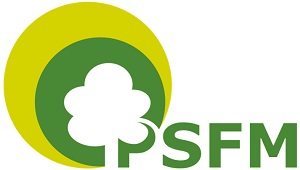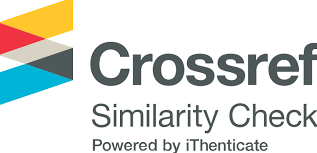ĐÁNH GIÁ TRỮ LƯỢNG VÀ KHẢ NĂNG HẤP THỤ CARBON CỦA RỪNG NGẬP MẶN TẠI HUYỆN NGHĨA HƯNG TỈNH NAM ĐỊNH
Từ khóa:
Carbon, biến đổi khí hậu,, hấp thụ carbon,, sinh khối, rừng ngập mặnTóm tắt
Rừng ngập mặn, đặc biệt là rừng ngập mặn ở vùng nhiệt đới và cận nhiệt
đới, cung cấp các dịch vụ hệ sinh thái quan trọng, bao gồm gỗ, củi, dược
liệu, nguồn lợi thủy sản, bảo vệ bờ biển, v.v. Trong bối cảnh biến đổi khí
hậu, rừng ngập mặn được coi là một bể chứa carbon đáng kể và có tốc độ
hấp thụ carbon cao, góp phần giảm nhẹ khí nhà kính và làm chậm sự
nóng lên toàn cầu. Một số nghiên cứu tại Việt Nam đã được thực hiện để
ước tính sinh khối và trữ lượng carbon của rừng ngập mặn, tuy nhiên,
việc đánh giá trữ lượng và tiềm năng hấp thụ carbon cho khu vực rừng
ngập mặn cụ thể còn hạn chế. Nghiên cứu này đánh giá trữ lượng carbon
trong sinh khối (trên và dưới mặt đất) và tiềm năng hấp thụ carbon của
rừng ngập mặn ở huyện Nghĩa Hưng tỉnh Nam Định. Thông tin viễn thám
(ảnh SPOT5 và 6) được sử dụng để xây dựng bản đồ hiện trạng rừng. Trữ
lượng carbon trong sinh khối và tốc độ hấp thụ carbon của rừng ngập mặn
được phân tích từ các nghiên cứu sẵn có, kết hợp tính toán bổ sung dựa
trên các phương trình ước tính sinh khối và số liệu đo đếm các ô điều tra.
Kết quả cho thấy tổng diện tích rừng ngập mặn ở khu vực này là 1.087,5
ha phân bố ở vùng cửa sông ven biển thuộc 8 xã và thị trấn. Trữ lượng
carbon của rừng ngập biến động khá lớn, từ 6,3 đến 91,2 tấn C/ha tùy
thuộc vào loài cây, tuổi và mật độ. Tổng trữ lượng carbon của rừng ngập
mặn ở khu vực này là 75.165 tấn C (hay 275.606 tấn CO2e) và lượng
carbon hấp thụ hàng năm là 13.823 tấn CO2e
Tài liệu tham khảo
1. Adame MF, Kauffman JB, Medina I, Gamboa JN, Torres O, Caamal JP, Reza M and Herrera-SilveiraJA. 2013. Carbon stocks of tropical coastal wetlands within the karstic landscape of the MexicanCaribbean. PLoS One 8(2):e56569
2. Benzeev, R., N. Hutchinson & D. A. Friess, 2017. Quantifyingfisheries ecosystem services of mangroves and tropicalartificial urban shorelines. Hydrobiologia. doi:10.1007/s10750-017-3299-8.
3. Bhomia RK, MacKenzie RA, Murdiyarso D, Sasmito SD and Purbopuspito J. 2016a. Impacts of landuse on Indian mangrove forest carbon stocks: Implications for conservation and management.Ecological Applications 26(5):1396-408. doi: 10.1890/15-2143.
4. Bhomia RK, Kauffman JB and McFadden TN. 2016b. Ecosystem carbon stocks of mangrove forestsalong the Pacific and Caribbean coasts of Honduras. Wetlands Ecology and Management24(2):187-201. doi: 10.1007/s11273-016-9483-1.
5. Bộ Nông nghiệp và PTNT. 2019. Quyết định số 911/QD-BNN-TCLN ngày 19 tháng 3 năm 2019 công bố hiện trạng rừng toàn quốc đến 31 tháng 12 năm 2018.
6. Cecep Kusmana,Topik Hidayat,Tatang Tiryana, Omo Rusdiana, Istomo. 2018. Allometric models for aboveand below-ground biomass of Sonneratia spp.. Global Ecology and Conservation 15 (2018) e00417. https://doi.org/10.1016/j.gecco.2018.e00417
7. Doughty, C. L., K. C. Cavanaugh, C. R. Hall, I. C. Feller & S.K. Chapman, 2017. Impacts of mangrove encroachmentand mosquito impoundment management on coastal protection services. Hydrobiologia. doi:10.1007/s10750-017-3225-0.
8. Donato, D. C., J. B. Kauffman, D. Murdiyarso, S. Kurnianto, M.Stidham & M. Kanninen, 2011. Mangroves among themost carbon-rich forests in the tropics. Nature Geoscience4: 293-297.
9. Donato DC, Kauffman JB, Mackenzie RA, Ainsworth A and Pfleeger AZ. 2012. Whole-island carbonstocks in the tropical Pacific: implications for mangrove conservation and upland restoration.Journal of Environmental Management 97:89-96. doi: 10.1016/j.jenvman.2011.12.004.
10. Duke NC, Meynecke J-O, Dittmann S, Ellison AM, Anger K, Berger U, Cannicci S, Diele K, Ewel KC and Field CD. 2007. A world without mangroves? Science 317(5834):41-2.
11. Đặng Trung Tấn. 1999. Sinh khối rừng trồng Đước ở Cà Mau. Kết quả nghiêncứu khoa học và công nghệ giai đoạn 1996 - 2000. NXB Nông nghiệp Hà Nội.
12. Jones T, Ratsimba H, Ravaoarinorotsihoarana L, Cripps G and Bey A. 2014. Ecological variability and carbon stock estimates of mangrove ecosystems in northwestern Madagascar. Forests 5(1):177-205. doi:10.3390/f5010177
13. Guangcheng Chen, Gail L. Chmura, Stephen Crooks, James G. Kairo, Baowen Liao and Guanghui Lin. 2013: Chapter 4: Coastal wetland: In: 2013 Supplement to the 2006 IPCC Guidelines for NationalGreenhouse Gas Inventories: Wetlands. https://www.ipcc nggip.iges.or.jp/public/wetlands/pdf/Wetlands_separate_files/WS_Chp4_Coastal_Wetlands.pdf
14. Goecke, S. D. & S. Carstenn, 2017. Fish communities andjuvenile habitat associated with non-native Rhizophoramangle L. in Hawai’i. Hydrobiologia. doi:10.1007/s10750-017-3182-7.
15. Hamilton SE and Casey D. 2016. Creation of a high spatio-temporal resolution global databaseof continuous mangrove forest cover for the 21st century (CGMFC-21). Global Ecology andBiogeography 25(6):729-38. doi: 10.1111/geb.12449
16. Ha Thanh NGUYEN, Reiji YONEDA, Ikuo NINOMIYA, Ko HARADA, Tan Van DAO, Tuan Mai SY and Hong Nguyen PHAN. 2004. The effects of stand-age and inundation on carbon accumulation in mangrove plantation soil in Namdinh, Northern Vietnam. TROPICS Vol. 14 (1): 21-37
17. Huỳnh Đức Hoàn. 2018. Xác định trữ lượng carbon của rừng Đước đôi trồng tại Khu dự trữ sinh quyển rừng ngập mặn Cần Giờ, Thành phố Hồ Chí Minh. Luận án tiến sỹ Lâm nghiệp. Viện Khoa học Lâm nghiệp Việt Nam, Hà Nội.
18. IPCC, 2006. Guidelines for national greenhouse gas inventories. Vol. 4, Agriculture, forestry and other land use (AFLOLU). Institute for Global Environmental Strategies, Hayama, Japan.
19. Kamal, S., J. Warnken, M. Bakhtiyari & S. Y. Lee, 2017. Sediment distribution in shallow estuaries at fine scale: in situevidence of the effects of three-dimensional structuralcomplexity of mangrove pneumatophores. Hydrobiologia.doi:10.1007/s10750-017-3178-3.
20. Kauffman JB and Donato D. 2012. Protocols for the measurement, monitoring and reporting of structure, biomass and carbon stocks in mangrove forests. Center for International ForestryResearch (CIFOR), Bogor, Indonesia
21. Kelleway, J. J., N. Saintilan, P. I. Macreadie, C. G. Skilbeck, A.Zawadzki & P. J. Ralph, 2016. Seventy years of continuousencroachment substantially increases ‘blue carbon’capacity as mangroves replace intertidal saltmarshes.Global Change Biology 22:1097-1109.
22. Komiyama, A., Poungparn, S., Kato, S., 2005. Common allometric equations for estimating the tree weight of mangroves. J. Trop. Ecol. 21, 471-477.
23. Murdiyarso D, Purbopuspito J, Kauffman JB, Warren MW, Sasmito SD, Donato DC, Manuri S,Krisnawati H, Taberima S and Kurnianto S. 2015. The potential of Indonesian mangrove forestsfor global climate change mitigation. Nature Climate Change 5(12):1089-92. doi:10.1038/nclimate2734
24. Nam VN, Sasmito SD, Murdiyarso D, Purbopuspito J and MacKenzie RA. 2016. Carbon stocksin artificially and naturally regenerated mangrove ecosystems in the Mekong Delta. Wetlands Ecology and Management 24(2):231-44. doi: 10.1007/s11273-015-9479-2
25. Nguyễn Thị Hà, 2017. Nghiên cứu mô hình ước tính sinh khối, trữ lượng carbon rừng ngập mặn trên cơ sở ứng dụng viễn thám và GIS tại Cà Mau. Luận án tiến sỹ Lâm nghiệp. Trường Đại học Lâm nghiệp, Hà Nội.
26. Nguyễn Hoàng Trí. 1986. Góp phần nghiên cứu sinh khối và năng suất quần xã Đước đôi (Rhizophora apliculata BL.) ở Cà Mau, tỉnh Minh Hải, Luận án Phó tiến sỹ Sinh học, Khoa Sinh vật - Kỹ thuật Nông nghiệp, Trường Đại học Sư phạm Hà Nội, Hà Nội.
27. Phang VXH, Chou LM and Friess DA. 2015. Ecosystem carbon stocks across a tropical intertidalhabitat mosaic of mangrove forest, sea grass meadow, mudflat and sandbar. Earth SurfaceProcesses and Landforms 40(10):1387-1400. doi: 10.1002/esp.3745.
28. Sheng, Y. P. & R. Zou, 2017. Assessing the role ofmangrove forest in reducing coastal inundation duringmajor hurricanes. Hydrobiologia. doi:10.1007/s10750-017-3201-8
29. Stringer CE, Trettin CC, Zarnoch SJ and Tang W. 2015. Carbon stocks of mangroves within theZambezi River Delta, Mozambique. Forest Ecology and Management 354:139-48. doi: 10.1016/j.foreco.2015.06.027
30. Tien Dat Pham, Kunihiko Yoshino & Dieu Tien Bui, 2016. Biomass estimation of Sonneratia caseolaris (l.) Engler at a coastal area of Hai Phong city (Vietnam) using ALOS-2 PALSAR imagery and GIS-based multilayer perceptron neural networks, GIScience & Remote Sensing, DOI: 10.1080/15481603.2016.1269869
31. Tien Dat Pham, Kunihiko Yoshino, Nga Nhu Le & Dieu Tien Bui, 2018. Estimating aboveground biomass of a mangrove plantation on the Northern coast of Vietnam using machine learning techniques with an integration of ALOS-2 PALSAR-2 and Sentinel-2A data, International Journal of Remote Sensing, DOI:10.1080/01431161.2018.1471544
32. Tien Dien VU, Wataru TAKEUCHI2) and Ngoc An VAN. 2014. Carbon Stock Calculating and Forest Change Assessment Toward REDD+ Activities for The Mangrove Forest in Vietnam. Vol. 12, No. ists29, pp. Pn_23-Pn_31, 2014. Trans. JSASS Aerospace Tech. Japan. https://doi.org/10.2322/tastj.12.Pn_23
33. Richards DR and Friess DA. 2016. Rates and drivers of mangrove deforestation in Southeast Asia,2000-2012. Proceeding of the National Academy of Sciences of the United States of America113(2):344-9. doi: 10.1073/pnas.1510272113
34. Pendleton L, Donato DC, Murray BC, Crooks S, Jenkins WA, Sifleet S, Craft C, Fourqurean JW,Kauffman JB, Marba N., 2012. Estimating global “blue carbon” emissions from conversionand degradation of vegetated coastal ecosystems. PLoS One 7(9):e43542. doi: 10.1371/journal.pone.0043542
35. Vu Tan Phuong, Tran Thi Thu Ha, Nguyen Thi Hai, Ha Thi Mung, 2015. Development of emission factors for a national REL/FRL for REDD+ for government’s submission to the UNFCCC. UNREDD Programme, Hanoi.
36. Vũ Tấn Phương, Trần Thị Thu Hà, Nguyễn Thùy Mỹ Linh. 2012. Báo cáo tổng kết đề tài nghiên cứu lượng giá giá trị kinh tế và môi trường của rừng phòng hộ ven biển vùng Nam Trung Bộ và Đông Nam Bộ. Viện Khoa học Lâm nghiệp Việt Nam, Hà Nội.












